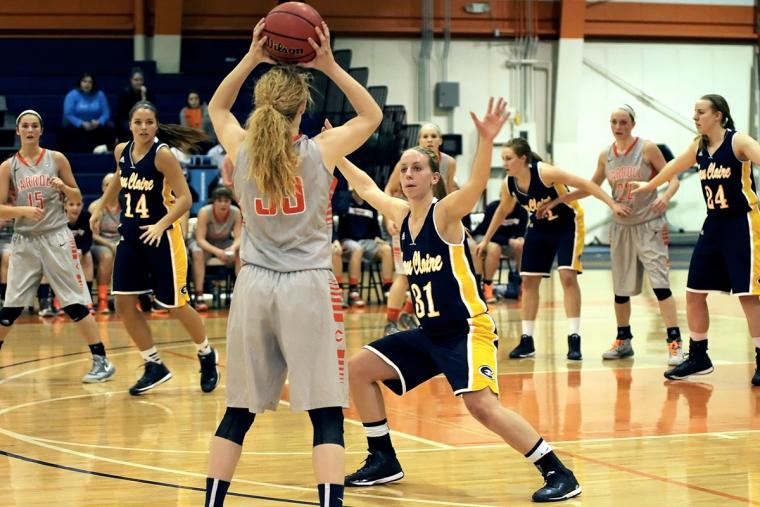
Remember when (not that long ago!) the NCAA women’s basketball tournament had amenities that included only a rack of weights while men had access to full workout facilities? (The NCAA tried to rationalize it but, well, NOBODY was buying what they were selling.)
Ultimately, pundits pointed out, it was because in terms of March Madness, women were second-tier. Unless it was beach volleyball, people weren’t tuning in with the same enthusiasm, and turnstiles weren’t flipping as quickly as they did for the men.
In fact, notes WSN, here are those numbers:
- NCAA Men’s Division I basketball has 351 teams, with 5,364 total games. Average attendance in 2023 was 4,455 per game/session. For the 2023 National Tournament, average attendance was 20,059.
- NCAA Women’s Division I basketball has 348 teams, with 5,241 games. The average attendance in 2022 was 1,358 per game/session. For the 2022 National Tournament, the average attendance per game/session was 7,183.
- In 2023, March Madness finals ratings set a record high for women (9.92 million viewers, with a peak of 12.6 million) but it still paled in comparison to the men’s action (an average of 14.7 million viewers), even though that was a record-low average for MBB. That slide in men’s viewership, some believed, indicated a growing interest in women’s sports.
But this year is expected to bring a BIG sea change – and to make good on those predictions about women’s sports. For the first time in history (thank you, Caitlin Clark) the women’s tournament is expected to be more closely watched than the men’s. And with Selection Sunday in the rear-view, we can expect to see those changes right away.
USA TODAY notes, “One tournament is going to have an abundance of attitude, social media personalities and sideline fashion. The other will require a cheat sheet to identify most of the relevant players and coaches.”
(Side note: Ouch.) But the article doesn’t stop with that slapdown: “Three years ago, the NCAA took a boatload of criticism (much of it well-deserved) for treating the women’s tournament as an afterthought. Now? The men might as well get used to being the opening act.”
While Iowa’s Clark is exerting an enormous pull, several other closely watched women’s athletes also will be turning the engine this March, including USC’s JuJu Watkins, LSU’s Angel Reese and UConn’s Paige Bueckers. (Another figure to watch: LSU coach, Kim Mulkey.)

So, yeah. Get ready. In fact, even before the tournament began people were paying more per ticket, plus they were traveling and locking in hotel stays.
Plus, Kent Wired notes, sports destinations are already amped for the women’s action. The Mid-American Conference is set to host the Women’s Final Four tournament alongside the Greater Cleveland Sports Commission for the first time since 2007.
“It’s an honor to host the NCAA Women’s Final Four in Cleveland, our second time bringing this great sporting event to our city,” David Gilbert, president and CEO at Greater Cleveland Sports Commission, said in a story from the NCAA. “It’s been exciting to see the growing interest in women’s sports — and especially women’s basketball.”
And those who want to watch NCAA women’s basketball from home will have ample opportunities to view it, says USA TODAY, which notes, “Every game of the women’s tournament will be aired; here is a schedule that will be updated with matchups on ESPN’s networks and streaming services with select games on ABC. While ESPN will air the Final Four, the title game will be back on ABC just like last season.”
In fact, says The Washington Post, it was 45 years ago that a women’s basketball game was televised. The game, between University of Maryland (then called the Terpettes) and the Immaculata Mighty Macs, was a watershed moment.
“Nobody had ever paid any attention to us, including The Washington Post,” Dottie McKnight, head coach of the Maryland women’s basketball team from 1964 to 1976, told the press. “But all of a sudden, reporters were at every practice, there were people who wanted to come to the game, and everyone just kept calling. Oh, my goodness.”
Oh, my goodness is right, Dottie; just look at the figures now. In 2011, the NCAA struck a deal with ESPN to run through August 2024. That deal bundles women's basketball with 29 other championships at a value of $34 million per year. The NCAA said it considered women's basketball's value within that deal to be between $6 million and $7 million. And just recently, the NCAA agreed to a $920 million, eight-year deal with ESPN for not just the women’s basketball tournament but 39 other championships.
Now, in the era of NIL, teams unionizing and (absolutely) social media, it may be that women’s team sports are, at long last, getting the credit they deserve. The first sign of the times: In 2022, women’s NCAA created individual user names for the DI men’s and women’s March Madness tournaments on both Twitter and Instagram.
It's a far cry from 1975, when that first game was on the air. Marianne Stanley (then Crawford), Immaculata’s star point guard from 1972 to 1976 and now the head coach of the Indiana Fever, remembers how groundbreaking it was at the time for ANY women’s basketball game to be televised.
“It was a watershed moment in women’s sports,” Stanley told reporters at The Washington Post. “For women to be allowed to play at Cole Field House, an iconic venue, [45] years ago in a national televised game ... think about that. It was a big deal.”

